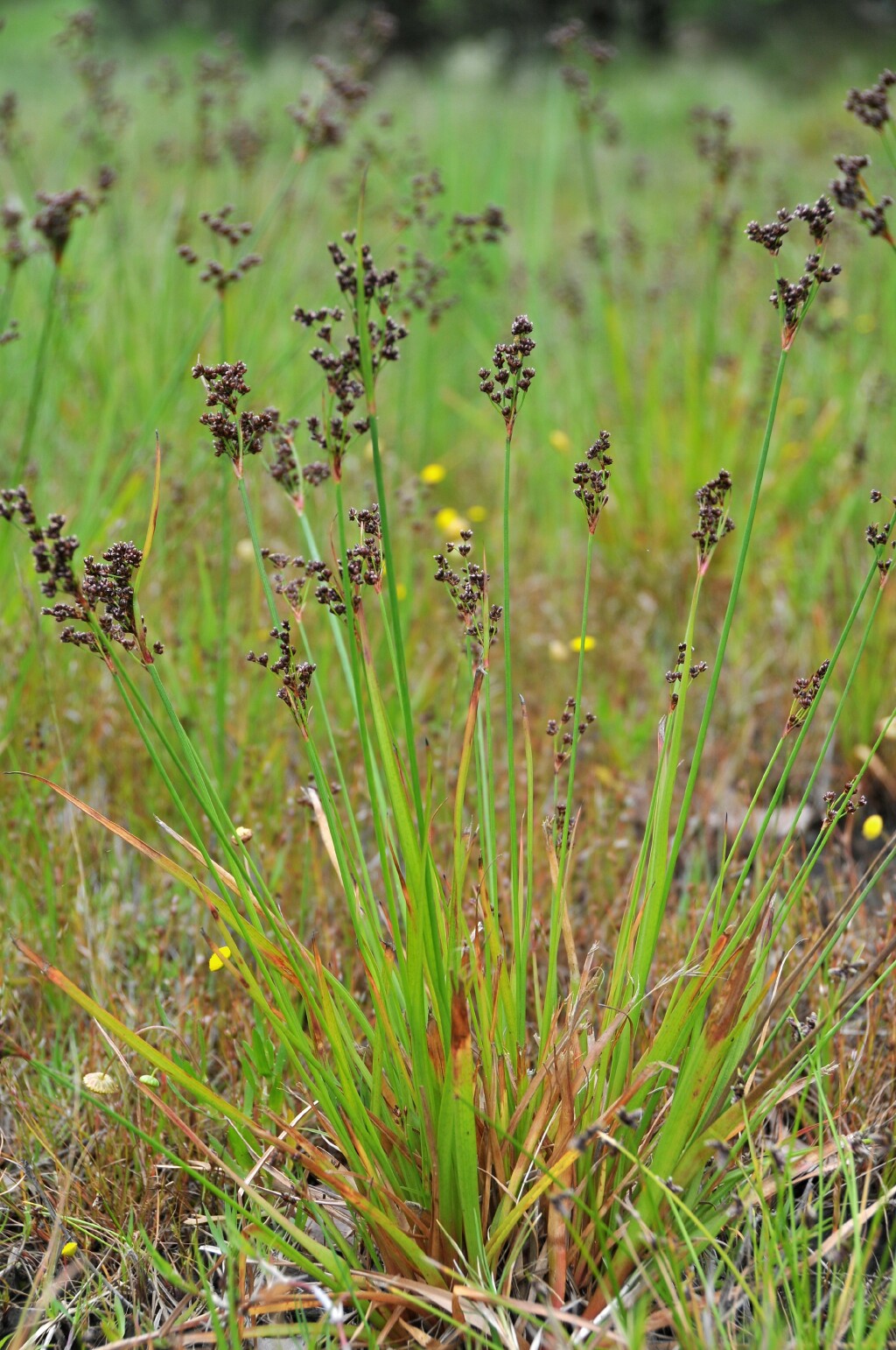Juncus planifolius
R.Br. Broad-leaf RushTufted, sometimes shortly stoloniferous annual or short-lived perennial, with or without short rhizomes. Culms erect, 2–60 cm high, usually exceeding leaves, minutely papillose. Leaves mostly basal; blade flat to slightly channelled, to c. 40 cm long, 1–11 mm wide, apex acute; sheaths usually reddish, broader than blades; auricles absent. Inflorescence often umbel-like, with a sessile or subsessile cluster of flowers, and an additional 1–50 (rarely more) clusters terminating branches of variable length; clusters with up to c. 40 flowers, expanding to 0.4–0.8 cm diam. in fruit; primary bract usually leaf-like, generally shorter than inflorescence; prophylls absent. Tepals with pale or brownish membranous sides; the outer 1.5–2.5 mm long, acute-acuminate; inner equal to outer, obtuse; stamens 3, very rarely 4–6, anthers 0.3–0.6 mm long. Capsules reddish-brown, ovoid, c. 1.6–2.5 mm long, obtuse and shortly mucronate, subequal to tepals; seeds c. 0.3–0.4 mm long, with very fine longitudinal and transverse ridges discernible at high magnification, minutely apiculate at one or both ends. Flowers mostly Sep.–Feb., seeds shed mostly Oct.–Jun.
LoM, MuM, Wim, GleP, Brid, VVP, VRiv, GipP, OtP, WaP, Gold, CVU, GGr, DunT, NIS, EGL, EGU, WPro, HSF, HNF, OtR, Strz, MonT, HFE, VAlp. All States except NT. New Zealand, Chile, Hawaii. Widespread in Victoria, occurring in both disturbed and undisturbed damp sites, e.g. swamps, creeks, paddocks and roadside ditches.
Sometimes mistaken for a species of Luzula, but is readily distinguished by its strictly glabrous leaves. Diminutive annual forms from the north-western part of the species range somewhat resemble Juncus antarcticus. In addition to the characters given in the key, J. planifolius has smaller seeds 0.3–0.4 mm long (0.4–0.5 mm long in J, antarcticus), and minutely papillose culms. Juncus planifolius is also close to J. caespiticius, but see key.
Albrecht, D.E. (1994). Juncus. In: Walsh, N.G.; Entwisle, T.J., Flora of Victoria Vol. 2, Ferns and Allied Plants, Conifers and Monocotyledons, pp. 197–233. Inkata Press, Melbourne.
 Spinning
Spinning



